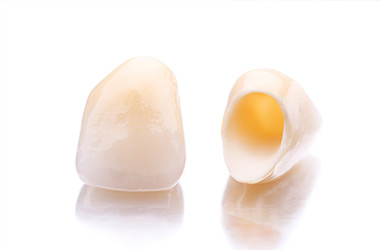
Tooth Restoration With Implants Now as Easy as Crown and Bridge Work
By Tim Kosinski, DDS, MAGD Bingham Farm, Michigan
Ongoing improvements in implant dentistry have produced many new treatments with successful, long-term results, making implants a viable alternative to more conventional reconstruction methods.
Because of these improvements, dental implants are now a first-choice tool in many cases in difficult and challenging esthetic cases. Thus, the therapeutic goal of implant dentistry shifts from mere tooth replacement to total oral rehabilitation that produces optimal results in appearance.
Modern design now allows us to precisely place dental implants within immediate extraction sites. Single tooth-by-tooth reconstruction provides easy access so the patient can floss and clean the areas with far greater ease than when crowns are splinted.
A recent case study clearly shows a dynamic and esthetic smile can be achieved using dental implants augmented by contouring of the gums coupled with conventional crown and bridge techniques.
An example of implant technology evolving and improving over time is the Replace Implant System introduced in 1997 by NobelBiocare, Yorba Linda CA. This system relies on a color coding to allow dentists to identify at a glance which restorative parts go with which size implant. Two years later an internal connection was added to simplify the impressing technique, seating of abutments, and crown and bridge placement – increasing the stability and reliability of single tooth restoration. Collars were shortened to improve esthetics.
A significant improvement in beauty, especially for patients with a high smile line and thin tissue, was made possible by the Procera custom shaping process to create the most natural profile and to make teeth restoration using implants as easy as crown and bridge methods.
One of our patients was a non-smoking, 51-year-old white female who suffered serious damage to her maxillary teeth as the result of a rear-end collision in 1979 causing her teeth to hit the steering wheel. Since there was no need to work around any habits involving the use of nicotine or alcohol, healing after surgery would be good and uncomplicated.
An important goal in this case was to make decisions on dental implant position and angulations prior to surgical placement. To achieve this goal, diagnostic wax ups, modern computer generated scanning and simple common sense designs are the key elements.
The diagnostic wax up is invaluable in determining proper placement of implants and is especially valuable when cement retained or screw retained crown and bridge is planned. A surgical guide is used pre-surgically to determine the ideal location and angulations of the implant site, and to optimize placement of dental implants for maximum esthetic and functional results.
When surgery was complete, silk sutures were used to close the surgical area and were removed in a week. After about five months of integration, second phase healing abutments were seated without complication.
The result was to an esthetic smile design using individual dental implants to reconstruct the edentulous spaces. The patient wore a guard at nighttime for the days following surgery to protect the teeth from bruxism. The patient was thrilled with the final esthetic result and was able to smile confidently again.
While the dental surgeon’s skill certainly is a key to smile design, implants, and other restorative procedures, we want to give due credit to advances design and materials in implant technology that helps us bring back beautiful smiles to beautiful people. Personal skill and technology is a partnership that will produce amazing results for patients far into the 21st century.
About Dr. Timothy Kosinski
Dr. Kosinski, an Adjunct Assistant Professor at the University of Detroit Mercy School of Dentistry, maintains a private practice devoted to comprehensive and implant dentistry. He serves on the editorial review board of Reality, the information source for esthetic dentistry. He is a Diplomat of the American Board of Oral Implantology/Implant Dentistry, the International Congress of Oral Implantologists and the American Society of Osseointegration. Dr. Kosinski was the University of Detroit Mercy School of Dentistry Alumni Association’s “Alumnus of the Year” in 2001. Dr. Kosinski has published over 45 articles on the surgical and prosthetic phases of implant dentistry and was a contributor to the textbook, Principles and Practice of Implant Dentistry.
For further information contact Dr. Kosinski at 31000 Telegraph Rd. St. 170, Bingham Farms, MI 48025 by phone at 248-646-8651 or via email at drkosin@aol.com or visit www.smilecreator.net.
